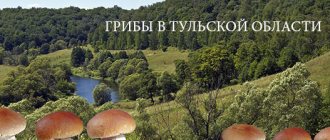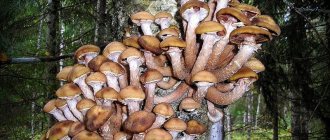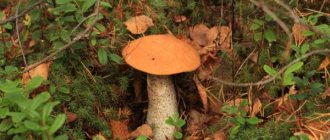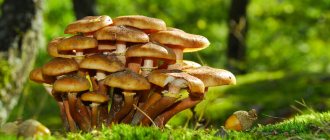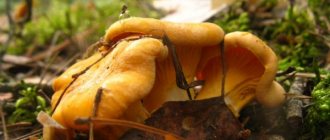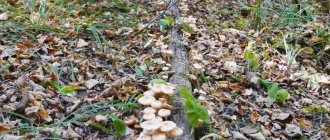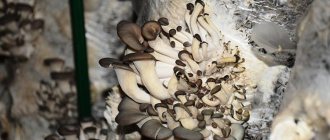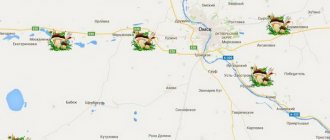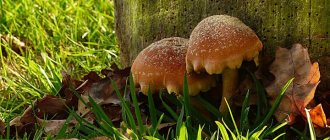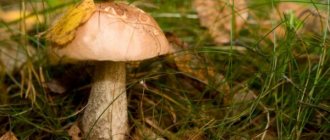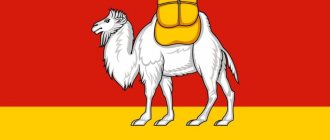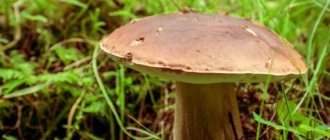Even a novice mushroom picker who does not collect forest fruits can find honey mushrooms in the Lipetsk region. Thanks to the wide open spaces of our region, the description with photos on our website and good fruiting in 2022, after the first trip to the forest, our readers will return home with baskets of delicious and aromatic honey mushrooms, ready for processing and cooking. At the same time, it doesn’t matter at all how they are prepared... the right approach will allow you to stock up on the gifts of deciduous latitudes until next year.
Mushrooms area
There are many good varieties in the Lipetsk region:
- white;
- oak trees;
- flywheels;
- boletus;
- boletus;
- honey mushrooms;
- Russula;
- saffron milk caps;
- milk mushrooms;
- Champignon;
- waves.
Rarer species that are not seen so often include umbrellas, milkweeds, floats and other edible representatives of the mushroom kingdom. In total, in the vicinity of Lipetsk there are more than 500 species, of which about 200 are edible (most are different subspecies of the same variety), and only 36 are poisonous. The rest are classified as inedible and conditionally edible.
Flag and coat of arms of the Lipetsk region
Precautionary measures
Even edible mushrooms can be dangerous if improperly processed or collected in the wrong area. There are several rules designed to protect a person’s safety when eating mushrooms:
- Gathering place. It is highly not recommended to collect mushrooms in places with poor environmental conditions. These include forest edges near roads and industrial areas.
- Collection time. There is a high chance of getting poisoned if you go harvesting after a drought or in hot weather. It is better to do this after rain, in damp and cool weather. That’s why “autumn” silent hunting is so popular.
- Eating fresh and young mushrooms. Stale mushrooms, like overgrown mushrooms, begin to accumulate toxic substances. Therefore, no matter how pitiful it may be, the unprocessed mushrooms that have been left behind will have to be destroyed.
- All mushrooms must be properly prepared: boiled, fried and baked for the entire period specified in culinary recipes. Prolonged heat treatment will destroy toxic substances in the fruiting bodies.
- When eating mushroom dishes, you should not drink alcohol.
The greatest predisposition to poisoning is:
- children under 7 years old;
- pregnant women;
- people over 50;
- those with weakened immune systems;
- those who have pathologies of the kidneys, liver and pancreas.
Edible species
When a person goes into the forest for edible mushrooms, he collects only the species that are familiar to him. Therefore, novice mushroom pickers sometimes leave behind many good varieties out of simple ignorance.
Porcini
White mushrooms
The Lipetsk region is rich in whites. Several subspecies grow here - classic white, oak and boletus. This means that there is a chance to meet specimens with different cap colors - from beige to dark brown.
Lipetsk "white hare" often has an unusual leg - tubular at the base. This, however, does not affect its general shape - the leg expands downwards and goes deep into the ground.
Green moss
Mokhoviki
Moss mushrooms, also called Polish mushrooms, are close relatives of white mushrooms. They grow not only in moss, but also in tall grass, and also almost everywhere in coniferous forests.
Their cap is dark brown, and the leg is yellow, with noticeable vertical fibers. The tubular bottom of the cap matches the color of the stem, and when pressed with a finger it turns blue.
Honey mushrooms
Honey mushrooms
These light brown mushrooms with thin stalks and scaly caps grow in “families” and often “inhabit” entire clearings. If you are lucky enough to come across a place where you can collect a full basket.
Most often, honey mushrooms are found in deciduous forests, where there are many old stumps and fallen trunks. Sometimes they are found under bushes and on the edges. There are also meadow honey mushrooms - they are collected in spring and early summer.
Chanterelles
Distant relatives of honey mushrooms - chanterelles - also like to grow in large groups, but have no weakness for dead trees. They are completely yellow, with a “curly” cap flowing into the stem. Despite the abundance of forms, the appearance of chanterelles remains recognizable. They grow in any forests, but are more often found in deciduous and mixed forests than in coniferous ones.
Chanterelles
boletus
boletus
The name tells the truth - these mushrooms are found mainly in birch groves and deciduous forests, in the immediate vicinity of birch trees. The light brown cap (sometimes it becomes darker due to weather conditions) and a fairly dense stem with a blackish fibrous pattern make it easy to recognize boletus among other mushrooms.
Red boletus
Boletus
They are similar to boletus mushrooms, but the cap is brighter, often with an orange tint. The leg is cylindrical, white or light gray with dark speckles.
They grow under aspens and (less often) under other deciduous trees. They are found in the forests of the Lipetsk region from the beginning of summer, but by mid-July they almost disappear and return at the end of August.
Real oil can
Butter
Light brown mushrooms with a slimy cap (in dry weather it becomes sticky). The caps of young specimens resemble a hemisphere, while those of mature specimens are flat, pillow-like.
There is often a film ring on the stem. Before cooking, remove the skin from the cap.
Gyropores
A peculiar symbiosis of white and moss fly - similar to the first, but when damaged they turn blue like the second. They grow most often in sand, in small groups. The leg is hollow inside, but at the same time quite strong. They are often called bruises.
Gyroporus blue
Russula Food
Russula
A multi-species group of agaric mushrooms, united by an easily removable film on the cap. There are inedible and even poisonous false russula. Therefore, for beginners in “mushroom hunting” it is better to take only those species that do not have “doubles” - green and red.
Ryadovka
Rows
Common types of edible rowers are gray (similar to russula, but have an uneven gray color) and greenfinch (completely lemon-colored, including the stem). Other types of rows, including white ones, do not have a distinct taste and are therefore unpopular.
Real milk mushroom
Milk mushrooms
The broad category united by the name “milk mushrooms” includes white lamellar mushrooms. They grow in large groups, often forming rings. Some are ready to eat right away.
Others (sometimes called podgrudki) secrete a milky liquid with a burning taste, so they must lie in salt water. There are also black milk mushrooms. They also secrete “milk”.
Ryzhik
Saffron milk caps
These are the closest “relatives” of milk mushrooms, characterized by a bright red color. It is almost impossible to confuse them with other mushrooms, except perhaps with the paler spruce mushrooms. Ryzhiki are very valuable in cooking, especially in salted and pickled forms.
Eloviki
Relatives of saffron milk caps are very similar to them, but the color is much less bright. They grow, as the name says, mainly in coniferous forests.
Elovik
Volnushka pink
Volnushki
These mushrooms come in different varieties, including inedible ones. Of the good ones, the most common one in the Lipetsk region is the pink wave. The cap is often covered with fringe-like scales. White also looks the same, differing only in color.
When collecting this type of mushroom, it is worth looking at the cut - if the “milk” stands out and turns green, then this is a false mushroom. You can’t call it poisonous, but it’s also tasty.
Common champignon
Champignon
Forest champignons, or pecheritsa, are yellowish, sometimes brown, often with scales on the cap. There is also their close “relative” - the umbrella. The cap of this mushroom is similar to a forest champignon, but the stem is much longer and thinner. If the umbrella is already mature, then the leg is not eaten due to its hardness.
Oyster mushrooms
They grow like honey mushrooms - in large “families” and also on wood. They are colored light brown, often with a grayish tint. When cut at the root, the “family” of oyster mushrooms looks like a bunch, which distinguishes them from honey mushrooms. They look exactly like the oyster mushrooms sold in stores.
Autumn oyster mushroom
Collection rules
For “silent hunting” they take large baskets, low and wide. It is better to refuse plastic bags - the mass in them quickly heats up and wrinkles. Only young mushrooms that are not damaged by pests are collected. Old and overgrown specimens are left in the forest because they often accumulate toxins.
Honey mushrooms are cut at the root with a knife so as not to damage the mycelium. Pulling out or breaking off the mushroom is not allowed. They go on a “quiet hunt” in the morning, since the fruiting bodies grow at night.
Inedible
Inedible mushrooms are mostly harmless. They fall into this category either for their bitter taste, which is removed by long soaking in salted water, or for their lack of valuable taste and hard fibers. If there is any poison in their composition, it is light and does not cause much harm to the body.
Common milkweed
Milkers
A subspecies of milk mushrooms that differs from other varieties in its bright red or burgundy color. It produces a bitter milky liquid, so it needs to be soaked for a long time. Formally, the milkweed is not considered inedible, but due to tedious processing and inexpressive taste, it falls into this category in a number of classifications.
False greenfinch
False greenfinches
They are similar to greenfinch rows, but the cap is a little darker, closer to olive than lemon. They contain a weak poison, which in small quantities (say, if there is one false one among the greenfinches) is harmless.
Pepper oiler
Pepper mushrooms
Outwardly they resemble boletus, but there is no peelable skin on the cap. They are not poisonous, but have a sharp pungent taste.
Because of this, they are sometimes used dried as a seasoning - instead of ground black pepper. Mushroom pickers bypass them, because the proximity to the pepper mushroom changes the taste of edible samples for the worse.
Bile mushroom
Bile mushrooms
They are similar to white and boletus mushrooms. The leg is slightly yellowish, which makes it possible to identify the gall fungus. They are not poisonous, but have a bitter taste that increases with heat treatment.
Raincoats
These unusual round mushrooms, which appear immediately after rain in forests and meadows, are edible and tasty when young. But as soon as their flesh begins to turn yellow, a weak toxin appears, leading to intestinal upset when ingested. Even if the puffball is completely white, and only in the very center of the mushroom, when cut, a yellow speck is discovered, it is no longer edible.
Common puffball
Brief description + photo
Assumption or autumn honey mushrooms have a thin and very fragile stem of a dark color, less often - light. The mushroom cap is slightly rounded and covered with dark scales. Under the cap there is a skirt consisting of a thin film. Color - can vary from light yellow to deep brown tones.
The size of old mushrooms can reach 15 cm. Young mushrooms are small in size. If you look at the photo below, you cannot help but notice that a family of mushrooms growing in one place often has the same size, as if nature maintained symmetry when growing mushrooms.
Poisonous
To avoid serious health problems and even a threat to life, a mushroom picker should know about poisonous mushrooms and be able to distinguish between them. And if some specimen found in the forest seems dubious, you shouldn’t touch it.
Fly agarics
Fly agarics
These poisonous mushrooms are presented in a whole palette of colors. They are united by a “bulb” at the base of the stem and light scales on the cap. Many species also have a filmy ring around the stalk. Everyone knows fly agarics, so cases of poisoning by them are extremely rare.
Death cap
Pale toadstools
Toadstool is one of the most poisonous mushrooms found in Russia. After contact with it, you need to immediately wash your hands, and if it ends up among the crop, throw everything away. The pale green “pest” quite successfully disguises itself as a green russula, but can be identified by its elongated stem, filmy ring (not always present) and the “bulb” from which it grows.
A mature mushroom can also be identified by its sweetish smell, noticeable several meters away. Close relatives of toadstools - spring and white fly agarics - are also found near Lipetsk.
Thin pig
Thin pigs
In many regions of Russia, black milk mushrooms are mistakenly called “svinushki”. In fact, pig mushroom is a very dangerous mushroom that has nothing in common with milk mushrooms. When consumed, it provokes acute renal failure.
It has a fleshy cap of brown or brown color, in young specimens it has rolled edges. The stem is longer and denser than that of similar edible mushrooms (black milk mushrooms and saffron milk mushrooms). If the weather is dry, the hat will feel “velvety” to the touch, which also helps to identify the pig.
False honey mushrooms
These mushrooms differ from honey mushrooms in a more expressive color - yellow-brown or reddish. However, they tend to change shade due to growth conditions, so sometimes they look like their edible “relatives”. But false mushrooms do not have scales on their caps. They also often grow on the ground, and not on stumps and fallen trunks. Therefore, it is not difficult to distinguish the substitution.
False honey fungus
Common puffball
False raincoats
Unlike ordinary puffballs, which are snow-white “when young,” the false puffball immediately grows yellowish-brown. Despite their external similarity, real and false mushrooms belong to different groups (champignon and scleroderma, respectively).
Yellow-skinned champignon
Red champignons
They look like edible champignons and are almost indistinguishable in appearance. But the poisonous red champignon is given away by its pungent smell of phenol (the so-called “pharmacy”).
Many people associate this aroma with gouache. The smell becomes much stronger when cooked, so you can use a lighter.
Dangerous species
In addition to good mushrooms, poisonous species are also often found in the region. Eating their fruits is very dangerous. Therefore, you should “know by sight” the poisonous mushrooms of Lipetsk so as not to accidentally put them in your basket.
False honey mushrooms
Sulfur-yellow and brick-red false honey fungus are twins of edible honey mushrooms. The first false one is identified by the unpleasant smell of the pulp and the absence of a mushroom ring. The brick-red variety can be recognized by the striking color of the fruit (in good honey mushrooms the color is expressed in muted tones) and the absence of a ring on the stem.
Stitches
The poisonous Common String is often confused with the edible morels. Mushrooms are distinguished by the type of surface of their caps. Contrary to the logic of morels, it is not wrinkled, but deeply porous, cellular. But the caps of the stitches are really very wrinkled.
Fly agarics
Some varieties of fly agaric can be confused with edible mushrooms. The smelly fly agaric with its snow-white fruits is considered especially insidious. A poisonous mushroom can be identified by the presence of a filmy ring, a flaky coating on the body and an unpleasant “ammonia” odor emanating from the pulp.
pigs
The pigs were classified as poisonous not so long ago. The toxins of these mushrooms act smoothly, so symptoms of poisoning do not appear immediately. By the way, each person’s susceptibility to the poison of pigs is different. Some people can easily eat these toxic mushrooms without worrying about the consequences.
The structure and shape of the fruits of pigs are reminiscent of milkweeds. However, it is easy to distinguish by its loose, odorless, tasteless pulp that turns brown at the break.
Mushroom places
Coniferous and deciduous forests of the Lipetsk region are equally rich in mushrooms. But the largest harvest can be harvested in plantings where the following trees grow at least in small quantities:
- oak;
- birch;
- aspen.
The abundance of poplars and mountain ash, on the contrary, means a weak predisposition of a particular forest area to the growth of fungi. You can still find edible specimens there, but by avoiding such a forest, the mushroom picker can count on a richer harvest.
The region's mushroom regions are numerous. It is impossible to cover them all, since many places are kept secret by mushroom pickers, fearing an influx of competitors. The most famous locations are:
- microdistrict Yellow Sands (a wide variety of mushrooms grow here in large quantities, due to the excellent ecology);
- Karamyshevsky district (white, moss mushrooms);
- With. Dobrovka (white, moss mushrooms);
- Plekhanovsky district (boletus, spruce, chanterelles);
- Fashcheevsky forest (boletus, russula, milk mushrooms, volushki);
- Sentsovsky forest (white mushrooms, boletus, russula, milk mushrooms, trumpets);
- Plekhanovsky forest (boletus, chanterelles, boletus);
- recreation center “Quiet Don” (white raspberries, boletus, boletus, and there are also a lot of wild raspberries in the local forests);
- recreation centers “Parus” and “Lesnaya Skazka” (this region is the richest in honey mushrooms in the entire Lipetsk region, and they grow here in huge “families”);
- Matyrskoe reservoir (a lot of mushrooms, but due to the environmental situation they are often wormy).
Useful properties of honey mushrooms
Like any product grown on noble soil far from the road, honey fungus contains useful substances, vitamins and minerals. Mushrooms are rich in iron and phosphorus, zinc and vitamins B and C. Honey mushrooms contain large amounts of vitamin PP and E, which are characteristic of fish meat. But while not all people eat river fish, no one has ever given up mushrooms.
What is collected in spring, summer and autumn
| Mushrooms. | When to collect. |
| Oyster mushrooms | April – October. |
| Russula. | May – September. |
| Butter. | May – October. |
| Champignon. | June – September (meadow – from August). |
| Boletus mushrooms. | June – September. |
| White. | June – October (oak and boletus appear later, around mid-August). |
| Boletuses. | June – October. |
| Chanterelles, Gyropora. | July – September. |
| Volnushki. | July – October (pink – from August). |
| Milk mushrooms. | August – October (if rainy, then from July). |
| Rows. | August – October (gray – until September). |
| Saffron milk caps, Spruce trees. | August – October. |
| Honey mushrooms. | August – November (spring and meadow – from April to June). |
| Moss flyers. | August – November. |
Raven Stone and Vorgol Rocks
On the right bank of the Vorgol River in the Yeletsk region, these tracts are located near the village of Ryabinki, creating the impression of a mountain landscape. They are located in a canyon-like river valley. Huge picturesque limestone cliffs, locally known as “kichi,” jut out on both banks. Bizarre caves, limestone crevices, karst sinkholes.
One of them, “Voronov Kamen,” with an area of 9.5 hectares, was reserved in 1963; another - "Vorgolskoye" - with an area of 31 hectares - in 1969.
The accumulation of mountain ferns, high floristic diversity (457 plant species), the presence of rare species (Podolsk shivekeria, downy currant, bluegrass, etc.) determined the special value of these tracts and their taking under protection.
Slide 9
Favorable weather conditions for growth
Lack of precipitation, drought and high temperatures (over 25 degrees Celsius) have a detrimental effect on the mushroom mycelium - the fruits may not begin to grow at all, or they quickly die, losing moisture and collapsing from the inside.
Another unfavorable factor is sudden temperature changes (cold at night, scorching hot during the day). If fluctuations exceed the range of 10 degrees per day, the growth of honey mushrooms practically stops.
Excessive precipitation with frosts also does not contribute to a good harvest. If there is a heavy downpour once or twice in a few days, it’s time to run and check the “prey”. Has it been raining for weeks? Honey mushrooms will grow, but most likely they will be wormy and watery. In addition, mycelium requires oxygen, which does not penetrate well into the soil during droughts or floods.
From all that has been said, a simple conclusion can be drawn. The optimal air temperature for good growth of honey mushroom is 10-23 degrees Celsius. Humidity is high. Honey mushrooms grow in waves, so you can harvest them after every “serious” rain.
As a rule, from 1 to 4 streams of fruiting can occur during a season.
It is important not to miss the moment and go check the forest a day or two after heavy rain
Spring, summer and autumn honey mushrooms 2022, where do they grow in the Lipetsk region?
In Lipetsk you can find many mushroom places with honey mushroom mycelium. Professional mushroom pickers know for sure that honey mushrooms often grow next to deciduous trees in small ravines, stumps and lowlands. And if one honey mushroom catches your eye, then others are growing nearby.
Most often, honey mushrooms grow on old stumps of cut down and fallen trees, less often on the ground, camouflaging themselves under fallen leaves or in tall grass.
Fruiting time begins in mid-spring and lasts until the end of October. The first frost prevents the mushrooms from germinating further, stopping the mushroom harvest until the next year.
To find spring, summer and autumn honey mushrooms, just take a compass with you into the forest. According to mushroom pickers, more fruits can be found on the north side, where swamps, rivers and small ponds are located.
It is unlikely that at least one mushroom picker will give out his mushroom places to beginners. Therefore, it is better to search based on your own experience, using a map and approximate places that have turned out to be mushroom in recent years.
